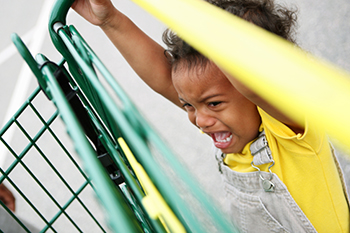Know the difference and how to stop either in its tracks.
Crying, screaming and yelling occur during both, yet a tantrum and meltdown are not the same thing. 
“Both tantrums and meltdowns are used as a strategy to communicate something,” says Kasey Davis, PsyD, ABPP, a psychologist at St. Louis Children’s Hospital. “It’s important to understand what is motivating your child’s behavior to discern the difference.”
Tantrum
Tantrums occur when a child is attempting to communicate he wants something. They are motivated by achieving a certain goal and often stop if a child gets what he wants.
How to handle:
- Keep a calm demeanor.
- Maintain the limit you set. Don’t cave when your child starts a tantrum.
- Intentionally ignore the disruptive behavior.
- Offer praise for good behavior when your child calms down.
“Consistency is key,” Davis says. “As a parent, give a similar response across all environments, whether at home
or in public.”
Meltdown
Meltdowns occur when a child is overwhelmed and usually stop when the child is in a calmer environment. Meltdowns often arise when your child experiences sensory overload.
How to handle:
- Find an escape and decrease the amount of noise
- or stimulation your child is getting.
- Model calming strategies for her, such as deep breathing or quiet singing.
- Hug her close.
Want more parenting tips? Visit ChildrensMD.org for more from our St. Louis Children’s Mom Docs.






